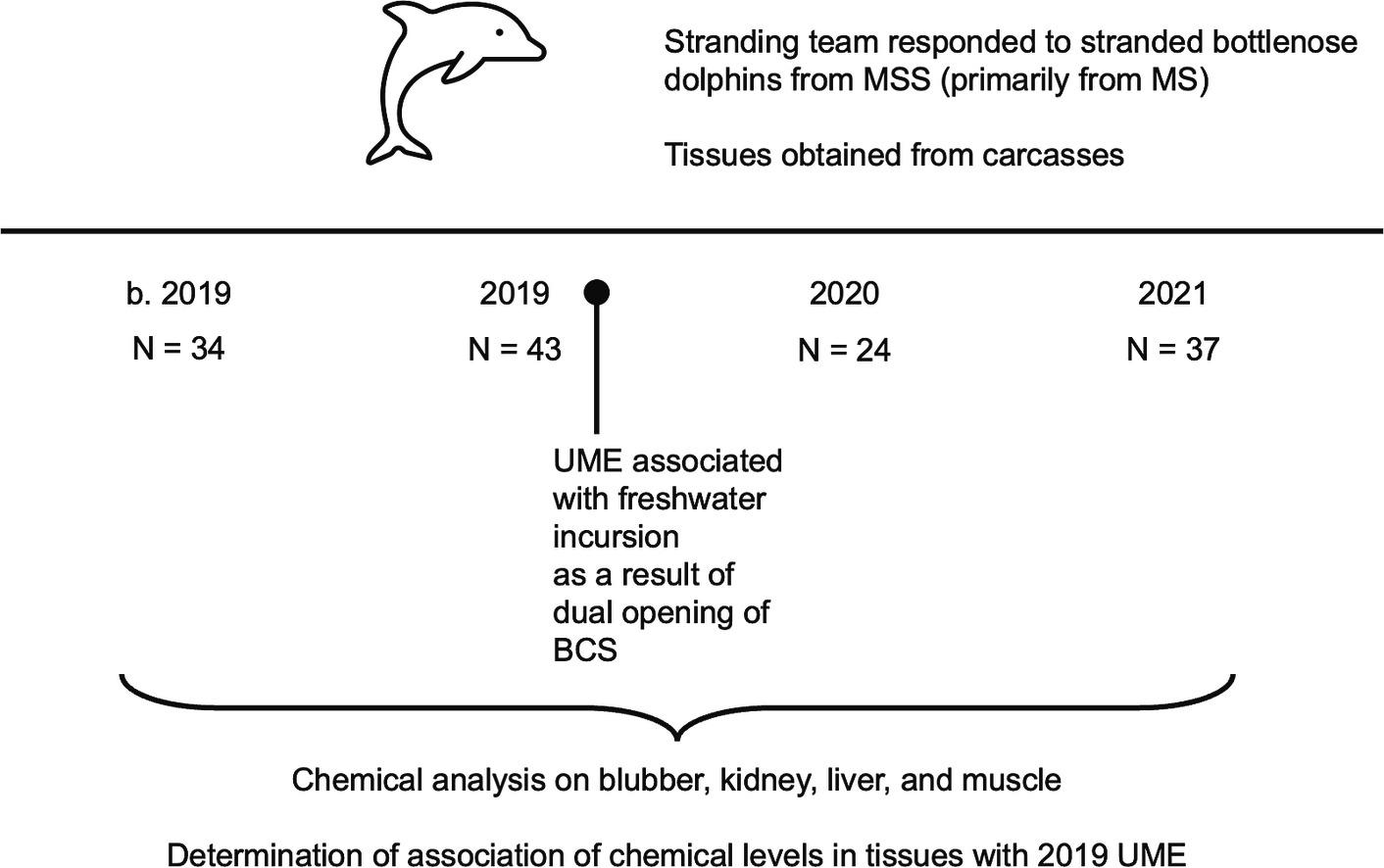
Authors: Nelmarie Landrau-Giovannetti, Jordan Rogers, Ryanne Murray, Stephen R. Reichley, Debra P. Moore, Theresa Madrigal, Ashli Brown, Ashley Meredith, Christina Childers, Darrell Sparks, Moby Solangi, Beth Peterman, Mark Lawrence, and Barbara L.F. Kaplan
Abstract
Cetaceans are regarded as a sentinel species because their health and population changes can serve as indicators of effects on marine ecosystems. We characterized levels of 24 polycyclic aromatic hydrocarbons (PAHs) and 7 polychlorinated biphenyls (PCBs) in blubber, kidney, liver, and muscle of 138 bottlenose dolphins (Tursiops truncatus) that stranded in the Mississippi Sound (MSS) between 2010 and 2021. The samples were divided into four time periods: 2010–2018, 2019, 2020, and 2021, to assess whether there was a significant association between chemical levels in dolphin tissues and the 2019 unusual mortality event (UME) in the MSS resulting from the unprecedented freshwater incursion from 2 openings of the Bonnet Carré Spillway (BCS). We found 7 PCBs were readily detected in all tissues across time, and the major PAH was naphthalene, with detection of biphenyl and acenaphthene at lower levels and frequency. There was little change in tissue PCB levels over time; only naphthalene in the blubber was higher in tissues from dolphins that stranded before 2019. However, there were not significant changes in chemical levels in tissues from stranded bottlenose dolphins in the MSS before or after the UME in 2019.
Read the full publication at https://doi.org/10.1016/j.scitotenv.2024.176747.